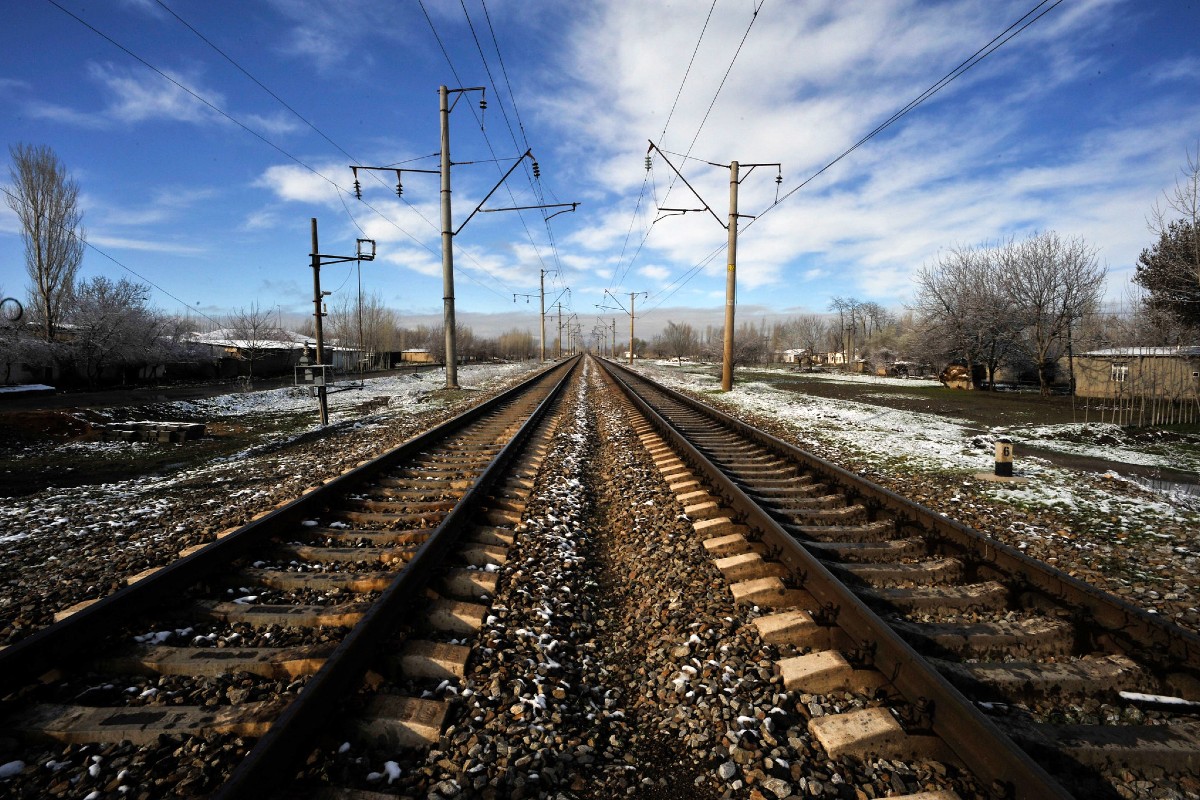East Asia Blog Series
How Trade via Rail in Central Asia Can Mitigate the Energy and Climate Crises
Zulfia Khamitovna Karimova 24 Aug 2022
Trade via rail in Central Asia has proven highly effective in recent years. It needs further support to take it to the next level.
In a world where 90% of global trade is moved by sea, the landlocked economies of Central Asia almost exclusively rely on rail and road transport for trade. Much of the long-distance cargo moves via existing rail networks, which have substantial potential to facilitate trade in the region and beyond, including between European, Middle Eastern and South/East Asian markets. Rail transport is also cheaper, safer, and less prone to border delays.
However, trade via rail faces structural obstacles. For example, the differences in railway gauges between the former Soviet states, the People’s Republic of China and Europe, Pakistan and India present a fundamental challenge. As a result, tracks are interrupted and need the transfer of freight at border crossing points – a time-consuming and labor-intensive task.
Long-distance trade in and across Central Asia was unappealing for years due to a lack of effective trade agreements and changing national trade laws that increased costs and unpredictability of rail transport, as well as weak service coordination, and cumbersome border crossings.
Despite these challenges, the number of express container trains traversing Central Asia has skyrocketed from 17 in 2011 to over 15,000 in 2021. This has been achieved on the back of political will, regional cooperation, and rail reform. Rail transport within the region has also thrived, facilitating trade flows between the People’s Republic of China and Central Asia while contributing to dialogue and transboundary cooperation.
This impressive growth can be attributed to simplified processes, including single window and single stops, reduced border inspections, improved platform companies, and competitive pricing. Central Asian governments have actively implemented ambitious reforms over the last years to facilitate trade. Uzbekistan’s Yallama border crossing is an example of this trend.
Most recently, rail transport benefitted from the COVID-19 pandemic as border closures and movement restrictions forced truck drivers to stay home. For example, Turkmenistan closed its border to foreign trucks, while Kazakhstan and Uzbekistan required foreign truck drivers to present negative COVID-19 test results and vaccination certificates. Mongolia faced such a severe supply chain disruption via road that food was temporarily unavailable, leading to increased prices.
Rail transport is cheaper, safer, and less prone to border delays.
As a result, truck operating costs surged, forcing some carriers to exit the industry, leading to a substantial drop in road transport capacity for both international and domestic shipments. Unsurprisingly, a significant percentage of cargo shipments quickly shifted from road to rail.
It became simpler to clear customs for one train driver operating a 40 container unit-train than 40 truck drivers operating 40 separate trucks. Rising fuel and energy prices, which impact the cost of road transport a lot more than rail where single trains move dozens of containers also explained the soaring rail business.
Moving forward, to maintain this shift, it is important that governments provide quality infrastructure for onward distribution, particularly to remote areas. Initiatives like Uzbekistan’s, which has actively supported an expansion of its road carriers’ truck fleets, are a good example of policy support for both rail and road to play to their own strengths.
The environment also matters in this shift. As it uses less energy per ton of goods moved, transport via rail is more climate-friendly. This is an important consideration for European Union (EU) members that are aligning their operations with the EU taxonomy and supply chain legislation, mandating greener and more sustainable ways of doing business.
Such measures can also be a blueprint for more sustainable short distance trade within the region. It will be up to the governments of Central Asia to create the right enabling environment to heave their transport and trade network into a more sustainable future. Subsidies to kickstart greener transport or pilot projects for alternative fuel options can go a long way to inspire change and ultimately policies, making the sector internationally more competitive.
The upward trend of rail transport will most likely continue over the coming decades as demand grows, fuel costs rise, and reducing the carbon footprint becomes a more important consideration for suppliers and end-consumers.
Future policy and regulatory challenges include fostering a commercial orientation for Central Asian railways, putting them on a solid footing for financial sustainability, improving the reliability and speed of service and filling in the missing links to enhance the performance of the rail network in supporting trade.
The recently announced China-Kyrgyzstan-Uzbekistan Railway, which will facilitate trade between the People’s Republic of China, Central Asia, Europe, Turkey, and the Middle East, will be an important addition to regional stability and cooperation on a global level. Importantly, peace and cooperation are natural effects of trade.
For land-locked countries or regions, rail transport infrastructure is the basis to stabilize economies and foster transboundary dialogue and cooperation.
Author

Zulfia Khamitovna Karimova
Principal Regional Cooperation Specialist, ADB
This blog is reproduced from Asian Development Blog.


